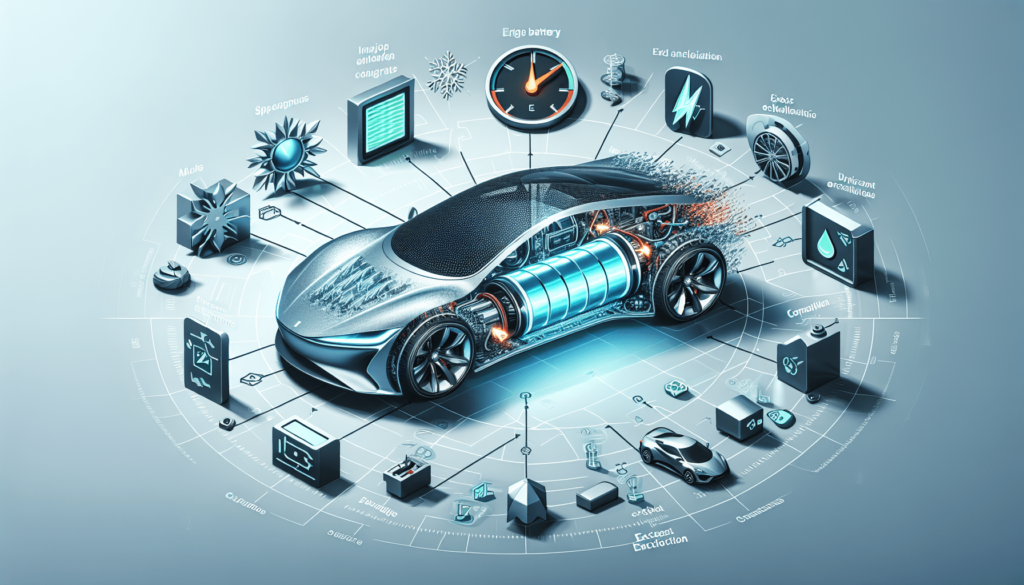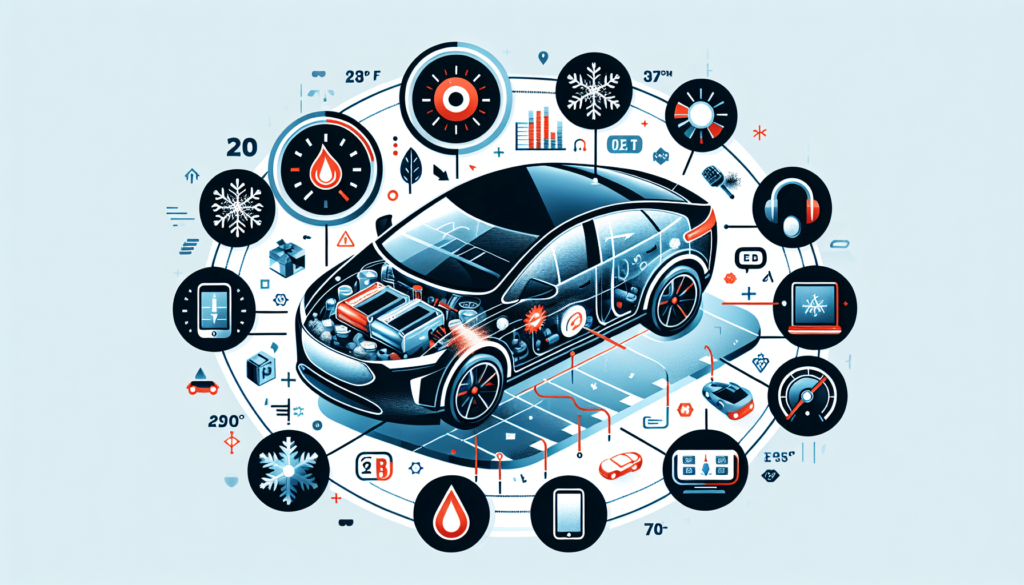So, you’ve finally made the leap to an electric car, huh? Well, one question that might be bugging you as you zip around silently is what exactly hits your car’s battery the hardest. It’s a pretty valid concern, considering the whole “getting stranded without a charging station in sight” scenario plays out like a modern-day horror story for EV owners. This piece dives into the heart of what drains an electric car battery the most, giving you the lowdown on how to keep your ride running efficiently for longer. Whether it’s the way you drive or external factors you haven’t considered, you’re about to become well-versed in keeping your electric chariot juiced up and ready to go. Electric cars are becoming increasingly popular, offering an eco-friendly alternative to traditional combustion engine vehicles. While they come with many benefits, understanding what drains an electric car battery the most can help you optimize its performance and extend its lifespan. Let’s delve into the main factors and how you can mitigate them.

High Speeds
Impact of Aerodynamic Drag
When you’re cruising at high speeds, aerodynamic drag becomes a significant factor. The faster you go, the harder your electric vehicle (EV) has to work to push through the air, which can lead to increased energy consumption. This resistance doesn’t just affect your speed; it directly impacts how much battery life you’re using to maintain those higher velocities.
Increased Energy Consumption
As your speed increases, so does the energy required to maintain it. Your electric vehicle’s efficiency can drop significantly at higher speeds, meaning you’ll get fewer miles out of a single charge. It’s a bit like running; the faster you go, the quicker you’ll get tired.
Comparison With Lower Speed Efficiency
Comparatively, traveling at lower speeds maximizes energy efficiency. At more moderate speeds, less energy is required to combat aerodynamic drag, and your EV can run more efficiently. This doesn’t mean you need to crawl everywhere, but finding a happy medium can help conserve your battery.
Frequent Acceleration and Braking
Energy Usage in Acceleration
Quick acceleration is another big battery drainer. Just like pushing hard on the gas pedal in a gasoline car uses more fuel, punching the accelerator in an EV drains more energy from the battery. Smooth and steady acceleration is key to preserving your electric vehicle’s range.
Regenerative Braking Limitations
While many electric cars feature regenerative braking to recapture energy, there are limits. The system captures energy typically lost during braking and redirects it back to the battery. However, aggressive driving with frequent hard stops can surpass the system’s ability to fully recapture this energy, leading to decreased efficiency.
Driving Habits Affecting Battery Life
Your driving habits play a significant role in how long your battery will last. Smooth, consistent driving habits help conserve energy and maximize your EV’s range, while erratic acceleration and braking can significantly decrease it.
Climatic Conditions
Effect of Cold Weather
Cold weather can be tough on electric cars. Low temperatures can slow down the chemical reactions within the battery, reducing its ability to hold a charge. This means in colder climates or seasons, your range may decrease, and your battery may seem to deplete faster.
Heat Impact on Battery
Conversely, extreme heat can also strain your EV’s battery. High temperatures can accelerate battery degradation, affecting its overall lifespan and efficiency. Managing your vehicle’s exposure to extreme temperatures can help maintain battery health.
Optimal Temperature Range for Battery
Batteries perform best within a moderate temperature range, typically between 20°C and 25°C (68°F to 77°F). Keeping your electric vehicle within this optimal range can help preserve its battery life and ensure you’re getting the most out of each charge.
Using Climate Control
Heating System Drain
Using the heating system in your electric car, especially during cold months, can significantly drain your battery. The energy used to warm the cabin decreases the energy available for driving. Moderating the use of your heater can help conserve battery life.
Air Conditioning Usage
Similarly, air conditioning can also deplete your battery, though typically less so than heating. On hot days, the A/C can be a considerable drain, especially if used inefficiently. Parking in the shade or using a windshield sun protector can help reduce the need for air conditioning.
Preconditioning While Plugged In
One way to mitigate climate control’s impact on your battery is to precondition your vehicle while it’s still plugged in. This means heating or cooling the cabin to a comfortable temperature before you start driving. Doing so uses power from the grid rather than draining your battery.

Heavy Vehicle Load
Weight Impact on Battery Efficiency
The heavier your vehicle, the more energy it requires to move. This means that carrying extra weight, whether it’s cargo or passengers, can decrease your EV’s efficiency and range. Being mindful of your load can help improve your vehicle’s performance.
Aerodynamic Effects of External Cargo
Adding cargo to the exterior of your vehicle, like a roof rack, can also increase aerodynamic drag, further reducing efficiency. If you need to transport large items, consider doing so in a way that minimizes their impact on your vehicle’s aerodynamics.
Optimizing Load for Better Range
When possible, optimize your car’s load for better range. This could mean removing unnecessary items from your trunk, choosing a more aerodynamic cargo box, or simply minimizing the amount of additional weight you’re carrying.
Older or Degraded Batteries
Battery Capacity Over Time
Just like any battery, the one in your electric vehicle will degrade over time. This degradation means a reduced maximum capacity, and therefore, a decreased range. Understanding and accepting this as part of the EV experience is important.
Signs of Battery Degradation
Signs of battery degradation include a noticeable decrease in range and slower charging times. If you’re experiencing these symptoms, it might be time to have your battery checked by a professional.
Maintenance to Extend Battery Life
While some degradation is inevitable, proper maintenance can slow the process. This includes avoiding extreme temperatures, minimizing exposure to full or empty charges, and ensuring your vehicle’s software is up to date.
Not Using Regenerative Braking Efficiently
How Regenerative Braking Works
Regenerative braking converts the energy normally lost during braking into electricity, which is then used to recharge the battery. It’s a brilliant feature that increases efficiency and range.
Maximizing Energy Recapture
To maximize the energy recaptured through regenerative braking, practice smooth and anticipatory driving. This means easing off the accelerator and allowing the car to slow down well before you need to stop, rather than relying on sudden braking.
Driving Techniques for Better Regeneration
Adopting driving techniques that maximize regenerative braking can significantly impact your EV’s efficiency. This includes using one-pedal driving where possible and being mindful of your driving environment to anticipate stops.
Inefficient Use of Accessories
Electrical Accessories Drain
Accessories like the stereo, lights, and wipers do consume energy but typically not enough to majorly impact your range. However, inefficient use or leaving them on when they’re not needed can add up over time.
Balancing Comfort and Efficiency
It’s about finding the right balance between comfort and efficiency. You don’t have to drive in silence and darkness, but being mindful about your accessory use can help conserve energy.
Energy-Saving Accessory Tips
Simple tips can help save energy, like using seat heaters instead of the cabin heater, as they consume less power. Another tip is to make sure all accessories are turned off before turning off your car to prevent unnecessary drain when you start it next.

Tire Health and Pressure
Impact of Tire Pressure on Range
Proper tire pressure is crucial for efficient driving. Under-inflated tires can significantly reduce your vehicle’s range due to increased rolling resistance. Always keep your tires inflated to the manufacturer’s recommended levels.
Choosing the Right Tires for Efficiency
Some tires are designed with efficiency in mind, offering less rolling resistance and, therefore, a better range. When it’s time to replace your tires, consider options that are appropriate for your driving needs and efficiency goals.
Regular Maintenance Checks
Regular checks and maintenance can prevent many efficiency issues before they start. This includes checking tire pressure, ensuring your alignment is correct, and keeping an eye on tire tread and condition.
Extended Idle Times
Battery Drain When Not Driving
Your electric car’s battery can still drain when you’re not driving. Systems like the clock, security, and onboard electronics all use power, even when the car is off. While this drain is usually minimal, it can add up if the car is left idle for extended periods.
Turning Off Unnecessary Systems While Idle
To minimize battery drain during idle times, make sure to turn off any systems that aren’t necessary. This includes the climate control system, headlights, and media system.
Smart Use of Power in Parked Conditions
Being smart about your power usage when parked can help preserve your battery. For example, if you’re waiting in your car, consider using accessories sparingly and turning off those you don’t need.
By understanding what drains an electric car battery the most and adopting better driving and maintenance habits, you can significantly enhance your vehicle’s efficiency, range, and overall battery life. Electric vehicles represent a promising step towards a more sustainable future, and optimizing their performance is something all EV owners can contribute to.

